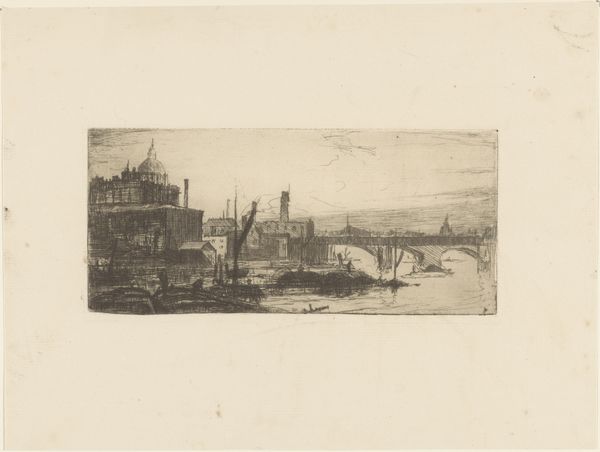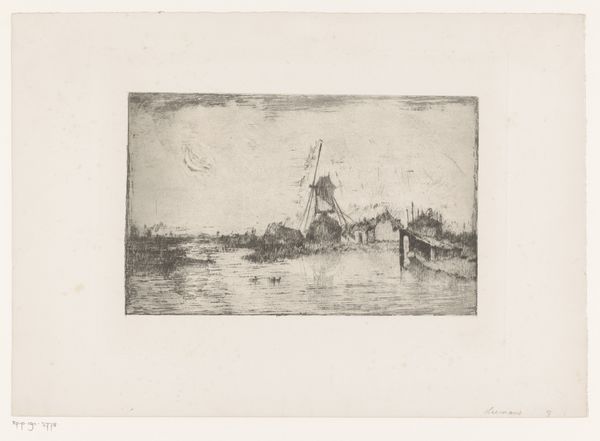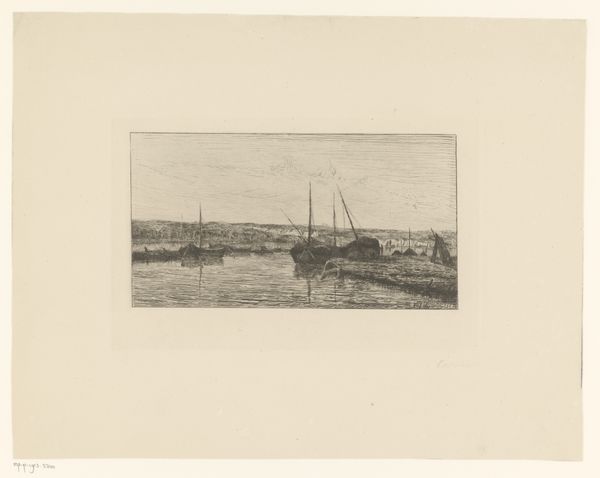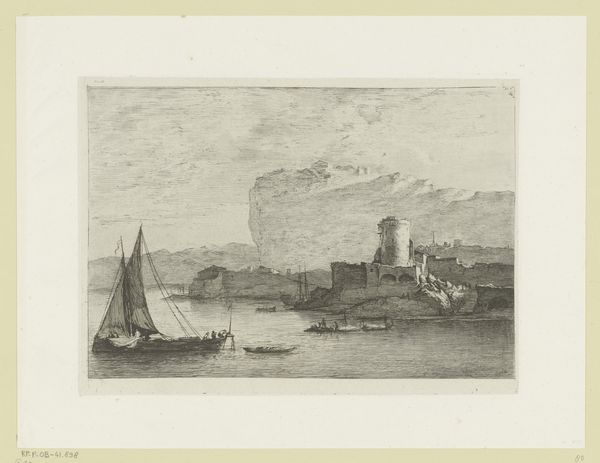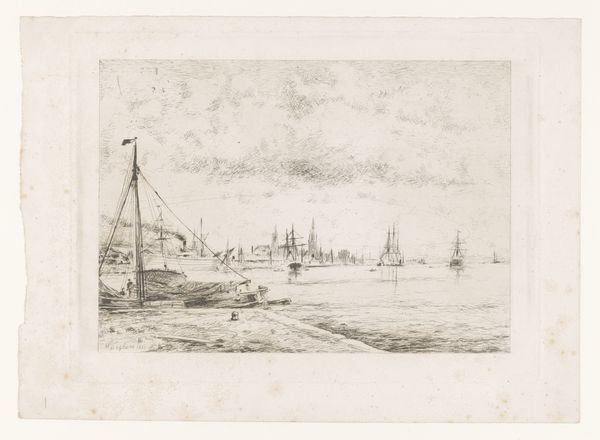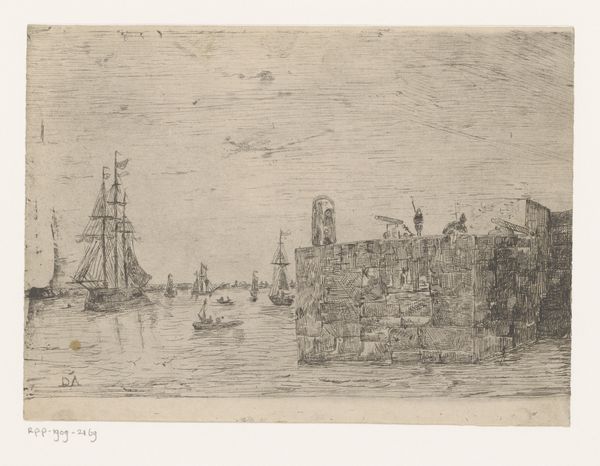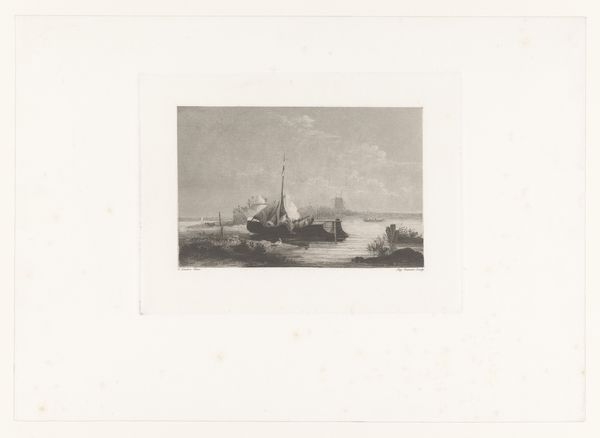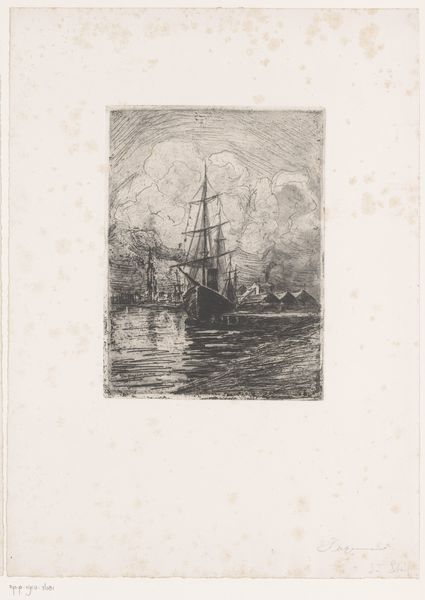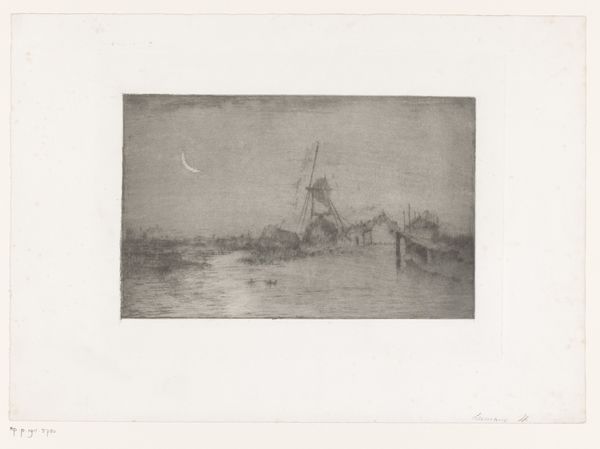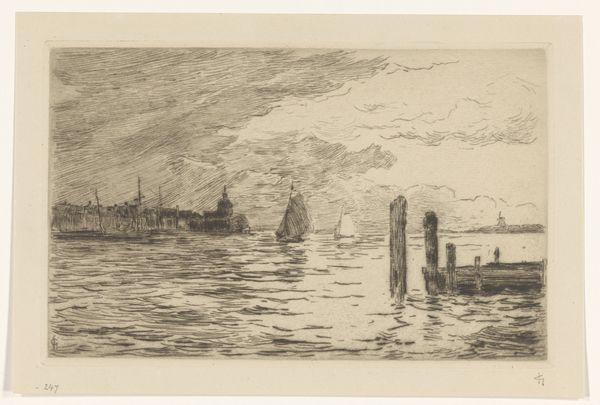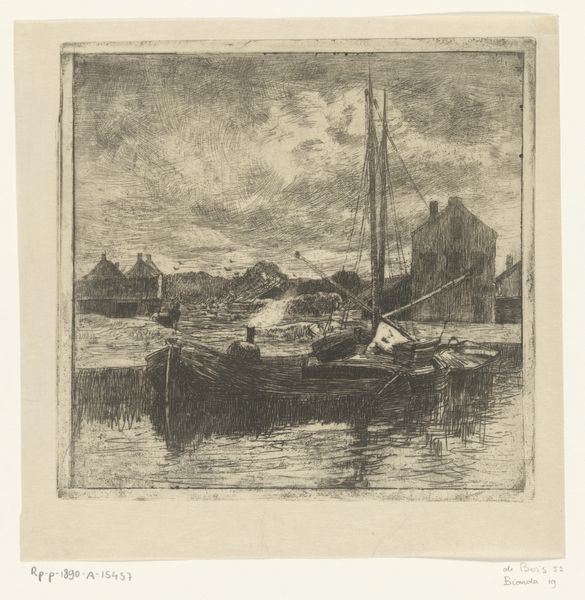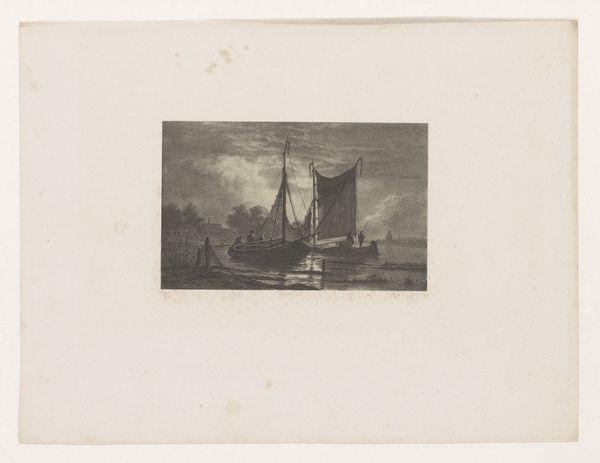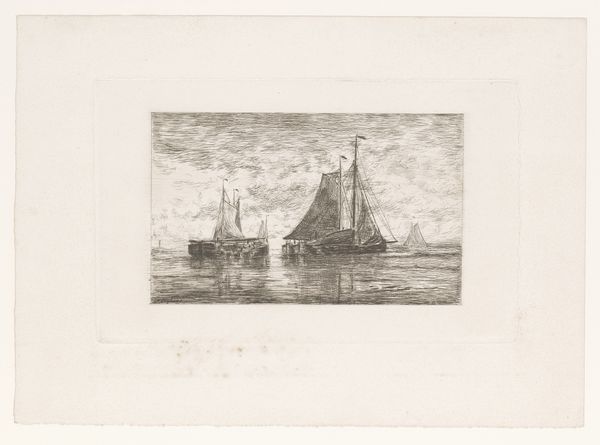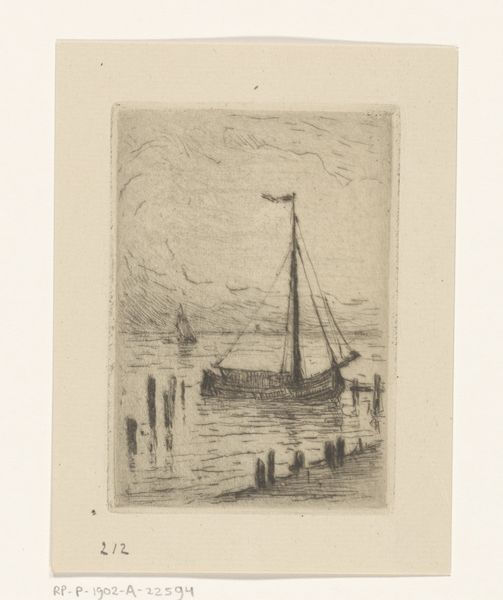
Dimensions: height 186 mm, width 259 mm
Copyright: Rijks Museum: Open Domain
Curator: Let's turn our attention now to Vicomte Arthur-Jean Le Bailly d'Inghuem's "Haven van La Goulette," an etching dating back to 1875. Editor: The atmosphere here feels rather subdued, even ominous. The heavy darkness of the fort contrasts dramatically with the relatively open, airy sky. What strikes me most is that this is not simply a serene landscape. Curator: You’re right. It's interesting to consider this work as more than just a depiction of a port. We need to acknowledge the artist's class position; as a Vicomte, his perspectives might certainly reflect his status and societal role, including an acceptance of existing power dynamics. The realism tinged with romanticism captures the 19th-century vision of landscape that’s closely entwined with geopolitical expansion. Editor: I find it deeply symbolic how the imposing fortress dominates the view, while ships, perhaps carrying colonial aspirations, are placed secondary in the frame. This work encapsulates a critical narrative about trade, security, and territorial ambition during that era. The very technique – etching – feels fitting, imprinting an almost indelible, albeit grey-toned, record of dominance. Curator: Indeed, the choice of medium underscores your point about permanence and the enduring presence of colonial structures. The play of light and shadow gives it depth. Considering that "La Goulette" was a strategic port near Tunis, then under Ottoman control with growing European influence, we might interpret this work as a visual assertion of European presence. Editor: And that cannon aiming out to sea – it underscores that. Are we meant to see beauty or a subtle warning? Does it commemorate the beauty of ships, or the assertion of power through fortification and weaponry? These structures carry so many historical connotations that reach out to the continued legacies of inequality even today. Curator: It’s the tension between aesthetic representation and historical narrative, and how each influences our perception of the other. Thinking about this work allows us to delve into how we examine art critically while acknowledging the intricate layers of social and political meaning imbued within. Editor: Absolutely. This image challenges us to see past the surface and delve into the currents of history, class, and ideology that inform every stroke.
Comments
No comments
Be the first to comment and join the conversation on the ultimate creative platform.
